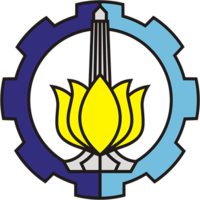Forms of Online Learning Communication during the Covid-19
Abstract
Keywords
Full Text:
PDFReferences
Abdul Latip. (2020). Peran Literasi Teknologi Informasi Dan Komunikasi Pada Pembelajaran Jarak Jauh Di Masa Pandemi Covid-19. EduTeach : Jurnal Edukasi Dan Teknologi Pembelajaran, 1(2), 108–116. https://doi.org/10.37859/eduteach.v1i2.1956
Ahmed, R. (2018). Effects of Online Education on Encoding and Decoding Process of Students and Teachers. MCCSIS 2018 - Multi Conference on Computer Science and Information Systems; Proceedings of the International Conferences on e-Learning 2018, 2018-July, 42–48.
Eka, A. G., & Wuryanta, W. (2013). Digitalisasi Masyarakat: Menilik Kekuatan dan Kelemahan Dinamika Era Informasi Digital dan Masyarakat Informasi. Jurnal Ilmu Komunikasi, 131–142.
Maisarah, M. (2013). Aplikasi Komunikasi Non-Verbal Di Dalam Kelas. Educate, 2(2), 241715.
Patricia, A. (2020). College Students’ Use and Acceptance of Emergency Online Learning Due to COVID-19. International Journal of Educational Research Open, August, 100011. https://doi.org/10.1016/j.ijedro.2020.100011
Suciati, S. (2018). Employing Digital Learning for Fostering Innovative Creativity. Jurnal Pendidikan, 19(2), 145–154.
Virginia, A. (2017). Pergeseran Budaya Komunikasi pada Era Media Baru: Studi Kasus Penggunaan Facebook oleh Digital Natives. Jurnal Komunikasi Indonesia, 1(2), 77–85. https://doi.org/10.7454/jki.v1i2.7822
Wahyono, P., & Husamah, H. (2020). Jurnal pendidikan profesi guru. Jurnal Pendidikan Profesi Guru, 1(1), 51–65.
Widiyono, A. (2020). Efektifitas Perkuliahan Daring (Online) pada Mahasiswa PGSD di Saat Pandemi Covid 19. Jurnal Pendidikan, 8(2), 169–177. https://doi.org/10.36232/pendidikan.v8i2.458
Wright, B. M. (2017). Blended learnings student perception of face-to-face and online EFL lessons. Indonesian Journal of Applied Linguistics, 7(1), 64–71. https://doi.org/10.17509/ijal.v7i1.6859
DOI: http://dx.doi.org/10.12962%2Fj29649714.v1i1.8326
Refbacks
- There are currently no refbacks.
